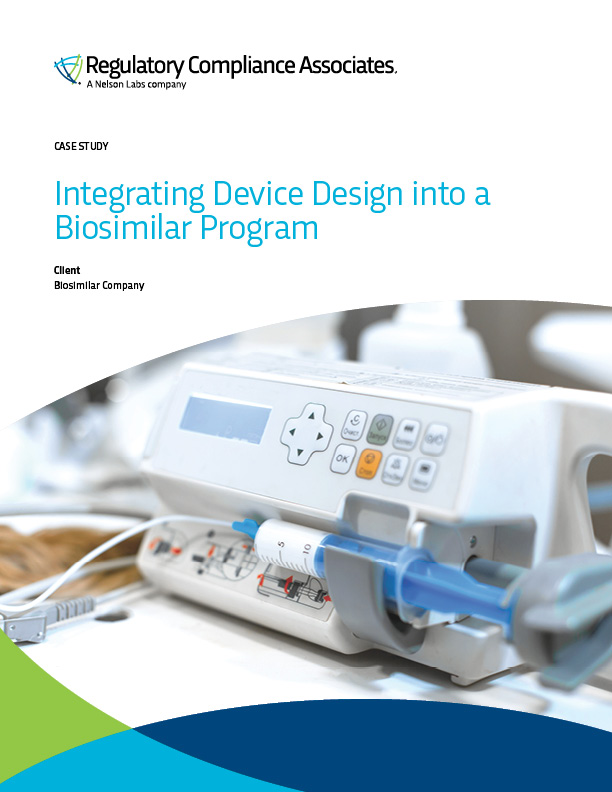Case Studies
Integrating Device Design into a Biosimilar Program
Client
Biosimilar Company
Industry
Combination Products
Business Challenge
Inclusion of a primary container for drug delivery
Background
An established pharmaceutical company with a strong background in biologics and biosimilars was preparing to enter Phase 3 clinical trials with a biosimilar product. While their drug development and manufacturing teams were experienced and well-resourced, the organization had no prior experience with medical devices.
With the introduction of FDA’s combination product regulations and 21 CFR Part 4, the company realized they needed to house their drug product in a drug delivery system—triggering a set of new design and regulatory requirements. Despite their mature quality system aligned to 21 CFR Parts 210/211, they lacked the internal expertise and infrastructure to integrate device development, design controls, and risk management into their QMS.
RCA Approach
Regulatory Compliance Associates® (RCA). was brought in to establish a compliant and sustainable combination product development framework. The engagement began with a comprehensive gap assessment to evaluate the client’s current quality system against the regulatory requirements in 21 CFR Part 820 and Part 4.
While foundational systems like CAPA were already robust, gaps were identified in design controls, risk management, and supplier controls. RCA worked closely with the client to integrate these new requirements into the organization’s operations.
Key activities included:
- Developing and revising SOPs:
- Multiple SOPs were created covering design controls, risk management, and management responsibilities.
- Existing SOPs (such as Purchasing Controls) were updated to reflect device-specific needs.
- Training cross-functional teams:
- RCA conducted training sessions for QA, regulatory affairs, manufacturing operations, and marketing on combination product regulations and new procedures.
- Establishing design documentation:
- Created complete design history files (DHFs) using new SOPs.
- Developed design and development plans, design input requirements, and detailed design specifications for all components, packaging, and labeling.
- Facilitated risk assessments through cross-functional collaboration.
- Technical and manufacturing support:
- Integrated device tests into ongoing stability studies.
- Worked with external vendors on component specifications.
- Helped develop and qualify an in-house final assembly process and supported manufacturing process qualifications for new equipment.
- Conducted and documented a design transfer to manufacturing.
- Verification & validation (V&V):
- Executed comprehensive testing, including:
- Container Closure Integrity
- Delivered Volume
- Break Loose and Glide Force
- Human Factors (Formative and Summative) per IEC 62366
- Executed comprehensive testing, including:
- Regulatory support:
- Assisted in authoring the Device Section of the BLA, ensuring alignment with FDA expectations.
Result
Thanks to RCA’s support, the company was able to initiate its Phase 3 clinical trials on schedule, with a fully compliant combination product.
Over the next two years, the organization successfully launched three commercial combination products—two prefilled syringes and one vial kit—all of which passed FDA audits. The quality system enhancements and DHFs stood up to regulatory scrutiny, and the trained internal teams were able to carry the work forward independently.
RCA also temporarily stood up a Device Development Department, mentoring internal staff and ensuring a seamless handoff post-acquisition. The company has since maintained compliance and continues to expand its biosimilar product portfolio with confidence.





















